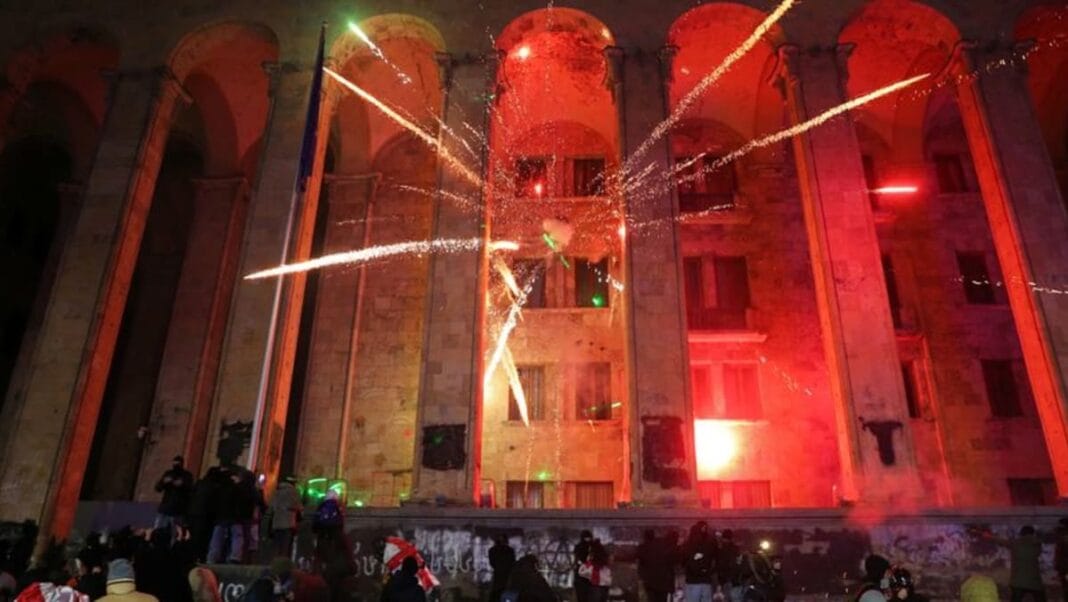Young Protesters Brave Harsh Conditions in Georgia
Despite cold weather, young protesters, some of them teenagers, stood their ground for an hour under streams of water from fire hoses sprayed by police from the parliament courtyard on Sunday. Police later deployed water cannons, but were unable to disperse the crowds.
“Georgian Dream is not my government. This is not Georgia’s government. This is a (pro) Russian government, and they must go,” said one of the demonstrators, 32-year-old bartender Alexandre Diasamidze.
Another protest took place outside the offices of Georgia’s Public Broadcaster (GPB), widely accused of acting as a propaganda tool for the ruling party. The broadcaster conceded to the protesters’ demand to grant President Zurabishvili airtime, which it had previously denied her.
Simultaneous protests took place in cities across Georgia.
Conclusion
In conclusion, the protests in Georgia highlight the growing discontent among the youth towards the current government. The determination and courage shown by the young protesters in the face of harsh conditions demonstrate their unwavering commitment to bringing about change in their country.
FAQs
1. What were the main demands of the protesters?
The main demands of the protesters included the resignation of the current government, perceived as being pro-Russian, and fair coverage by the public broadcaster.
2. How did the police respond to the protests?
The police initially used fire hoses and water cannons in an attempt to disperse the crowds but were ultimately unsuccessful in doing so.
3. What role did the public broadcaster play in the protests?
The public broadcaster was accused of acting as a propaganda tool for the ruling party and initially denied airtime to President Zurabishvili, a decision that was later reversed due to protester demands.
4. Why were the protesters adamant about their demands?
The protesters believed that the current government was not acting in the best interests of Georgia and wanted to see change in leadership and fair media coverage.
5. How did the protests unfold in different cities across Georgia?
Simultaneous protests took place in various cities across Georgia, showcasing a widespread discontent among the population.
6. What was the significance of the protesters’ resilience in harsh conditions?
The protesters’ resilience in facing harsh weather and police tactics demonstrated their strong determination and commitment to their cause.
7. How did the government respond to the protests?
The government’s response to the protests and the demands of the protesters remains to be seen, as the demonstrations continue to gain momentum.
8. What impact did the protests have on public opinion?
The protests raised awareness about the grievances of the youth and garnered support from segments of the population who shared similar concerns.
9. What are the future implications of the protests?
The protests could potentially lead to political changes in Georgia and a shift in media coverage towards greater transparency and impartiality.
10. How can individuals support the protesters?
Individuals can show their support for the protesters by raising awareness about the issues, engaging in peaceful demonstrations, and advocating for positive change in the country.
Tags
Tags: young protesters, Georgia, government, public broadcaster, protests, police, demands

